
The Ormer (Orm Singular) Aren’t the biggest focus of the DragonScape lore, they are nonetheless an important species of Éldimor, making up 8-9% of the éldimor population which granted, is small compared to their smaller drekir cousins. But Regardless they are a significant aspect of the setting and while I won’t be going quite as much in depth right now with the ormer as the Drekir, I still wanted to establish a page for them. Expect this to be continuously updated as I develop more images for this website to help demonstrate their lore.
I would recommend reading the drekir biology and social behavior as ormer will be frequently compared to them
This is also a WiP page by the way! Slow goin but it will be slowly updated!
Ormer Biology, Ergonomics, and Breeds
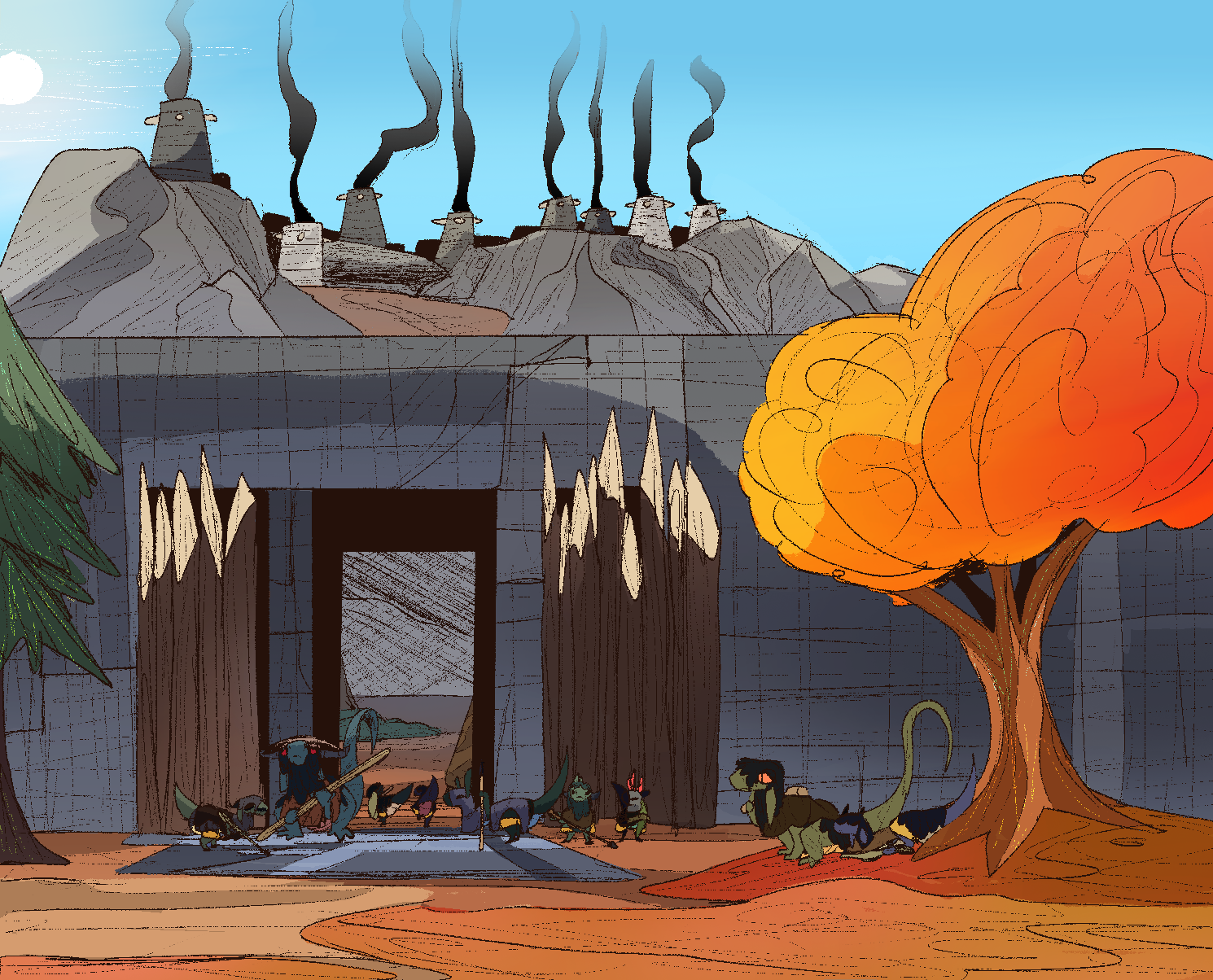
Size and Weight
The size and weight of an orm varies slightly on their breed so this will cover more of the broad averages of how big ormer get in terms of their height and their weight ranges. It is important to keep in mind that these are averages and not necessarily representative of each individual drek.
Size: Ormer are absolute giants compared to humans and drekir, the smallest of ormer will easily brea 7 feet in heit and the largest breeds of drekir tend to be as tall as 10 feet. In metric measurements that would be around 2-3 meters in height. Though your average orm may be around 2.5 meters in height
Weight: The smallest of orm breeds may on average weigh in at only 950 pounds and the heaviest largest breeds of ormer may weigh in around 2000 pounds, or in metric measurements around 430-910 kilograms. Your average orm in the more common normally sized breeds may weigh in around 1450 pounds, or around 700 Kilograms.
Sexual Dimorphism and Ormer
like the other intelligent draconic species known collectively as the Ẽldimor, ormer are not a heavily sexually dimorphic species with very few pronounced distinctions between males and females. The only practical distinctions between males and females relate to reproduction both physiologically and in reproductive behavior.
Food and Diet
Ormer are true Omnivores, in that they can subsist off of most any food with the two exceptions of cereal grains and dairy or dairy products, both of which they are incapable of digesting. While Ormer do eat meat, they often subsist more heavily on vegetables, fruits, starchy tubers, and other such foods! The big catch of the ormer is their large caloric needs, with ormer needing anywhere from 3500-8000 calories per day per adult orm (depending on breed).
Similarly to drekir, ormer have particularly strong digestive systems and can handle most slightly stale or rotten foods without significant problems. This, combined with being omnivores does allow them to eat a truly massive range of foods.
Ormer Ectothermy and Gigantothermy
Most ormer are ectothermic, or in other words cold blooded. Being cold blooded provides ormer a fair number of biological advantages and disadvantages in their day to day lives. There are only two breeds of ormer that are warm-blooded unlike the vast majority of ormer. Those breeds are Arctic and Alpine ormer.
One of the larger advantages is that ormer do not have a constant metabolic rate such as humans do as they do not have a constant internal body temperature. As such, while ormer really need to at lot compared to drekir and humans do not need to eat nearly as much as a creature of a comparable size, on a typical day a typical orm may eat between 3500-10,000 calories. Cold blooded ormer can reduce the amount of calories they are burning day to day by reducing their physical activity, but even still they will starve far quicker than drekir if left without food, with most ormer capable of only lasting 3-4 weeks without food before dying of starvation.
While cold blooded ormer still are vulnerable to shifts in temperature, their increased body mass and body fat serves as an insulator, helping them maintain heat in the cold and cold in the heat. This phenomena, known as gigantothermy, drastically increases amount of time they can spend in extreme temperatures which, while still not very long, is overall better than drekir.
Just like drekir, ormer will also bask after eating! Not much to say they bask! Exactly like the drekir.
Pheromones
Also comparable to drekir at least in the vague sense that ormer, like drekir, produce pheromones. Those pheromones also function in a very similar way to the drekir in regards to conveying emotion, biological and mental state, and identifying information. That said orm pheromones are often different in their common smells than drekir pheromones and so ormer and drekir often have difficulties gathering information from one another by smell alone unless they have had the time and experience to become more acquainted to the pheromones of their sibling species.
Ormer Ergonomics
Ormer Strength
The biggest asset of ormer thanks to being giants, is their very high strength, particularly in relation to their arms and upper torso. Your average orm can, with relative ease, lift and effectively manipulate objects with their arms that are up to 650 pounds (300 kilograms). Combined with how long their arms are means they have an amount of strength that is immense and far beyond human levels of upper arm strength.
However while ormer boast very strong arms, they lack the ability to carry that same amount of weight on their back. While they could indeed hold more than a drek simply on account of size, they will struggle carrying a proportionately similar amount of weight on their backs when compared to a drek carrying their own proportionately similar weight. Moreover ormer are not nearly as powerful with their legs relative to drekir. While they have more muscles and can kick with more force due to their sheer size, proportionately they are less efficient than drekir in this regard.
Ormer Speed, Agility and Maneuverability
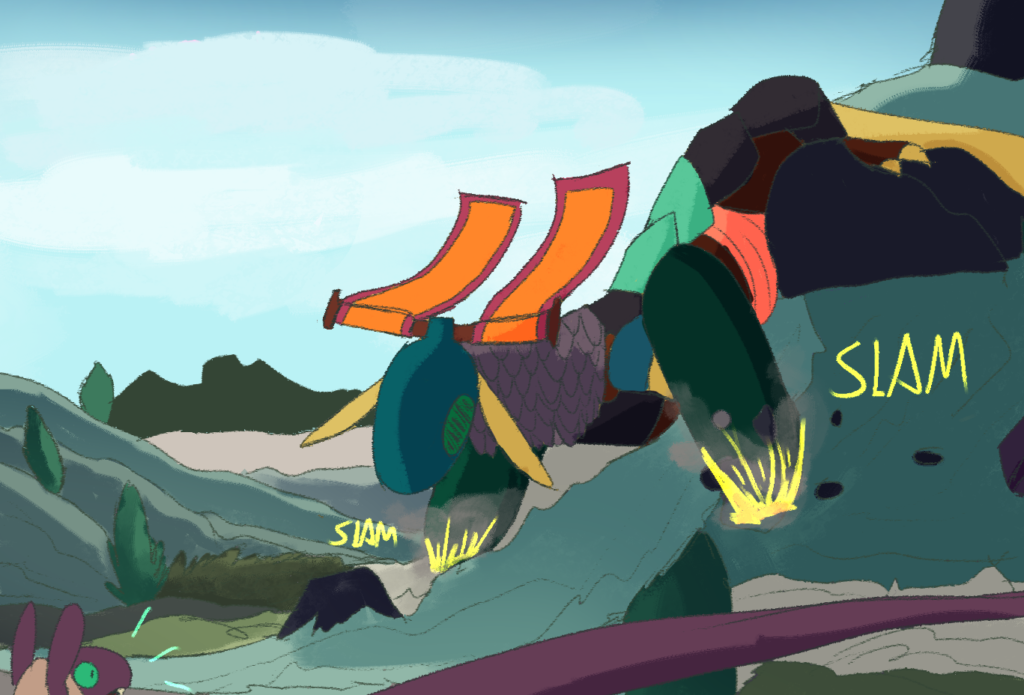
While Ormer aren’t by any means slow, they lack the speed of drekir. A very crucially important aspect of ormer mobility to cover first is that they primarily walk quadrupedal. While they can stand indefinitely on two legs and even walk short distances on their hind legs, if they wish to move any serious distance at any real speed, they must walk on four.
An orm, at a full sprint on all four legs can run upwards of 15 miles per hour (24 KmPH), additionally thanks to their additional flexibility compared to drekir they can turn and adjust their movement far faster. This lower speed, but greater agility compared to drekir allows them to maneuver through environments that are more winding and claustrophobic. befitting of a chaotic workshop. Though they cannot match the sheer speed of drekir, they are also not slow with ormer being just mildly faster than the average human runner and equal to a well trained human runner in overall speed.
Ormer Endurance and Cardio

Ormer and their ability to maintain physical activity is highly specialized, similar to the drekir. But whereas drek endurance is built around their role as beasts of burden, the endurance of ormer is built around their sivilão original job as crafters. Ormer have exceptional upper arm and upper chest endurance, allowing them to engage in physically intensive tasks that involve hammering, sawing, pushing and pulling things, etc. that involve their arms for extended periods of time. However they suffer in feats of traveling long distances, carrying weight on their back. While an orm can comfortably carry a load somewhat heavier than a drek, the efficiency that 3-5 drekir can bring to carrying heavy weight is far greater than any single orm.
Ormer Reproduction and Life Cycle
Ormer are a sexually reproductive, polygamous k selective species that forms a polycule of individuals with whom they form a tight familial and mating bond. While ormer often have many mates within their den, they are very selective about whom they mate with. Moreover they also far less promiscuous than drekir, with sexuality being far less common and therefore, eggs being far less common.
Ormer go through periodic “mating cycles” in which female ormer will only ovulate during these cycles, which happen once every 17-24 months. Males tend to be more consistently active, though have an incredibly low libido compared to humans. Sexual activity is infrequent, though a female is likely to become gravid due to engaging in sexual activity only during their mating cycle.
Pregnancy and the Egg
With successful fertilization, a female will have a gestation period that may last upwards of 4-5 months, though it may take longer. Unlike drekir, ormer may lay between 2-3 eggs with a single pregnancy and it is often the norm for an orm to lay up to 6 eggs per decade. Due to the far more actively parental drive of ormer, egg failure rates are notably low, averaging around 10%.
The Hatchling Period
An orm hatchling, while small relative to adult ormer, is still pretty large, averaging around 3 feet in length from snout to tail and weighing in at over 30 pounds. Like with drekir ormer hatchlings are pale, bald, with a large egg tooth that is used to break through their large, leather shelled egg. Ormer infants are far less independent than drekir offspring and require a similar amount of attention to that of a human child.
A hatchling is often a hatchling for an extended period of time compared to a drek, with the hatchling period encompassing the first 10 years of an orms life. They are known to grow and develop far more slowly than human or drekir children.

The Youngling Period
The youngling period for ormer is a very long prepubescent period that an orm will live through between the ages of 10-30 years of age generally, this is a period marked by gradual but steady physical and cognitive growth. Ormer particularly are mentally able to hyper specialize in their tasks and, therefore it is common for ormer to become masters of various crafts during this period.
Ormer are strange like that.
This is also when an orms color and fur fully grow in as well as breed specific traits such as horns, spines, and specialized tails begin to grow in as well. This is also when an orms molars begin to grow in, though the egg tooth will remain up until they become adolescents.
The Adolescent Period
The adolescent period ranges from 30-40 years of age and of course, is an orms teenager years. Starting with the falling out of an orms egg tooth, this is a period of incredibly rapid growth (relative to the slow growth of ormer) and when they mature physically and mentally into an adult. After this final Growth spurt, usually in their early 40s, an Orm will finally be a biological adult.
The Young Adult Period
This period, typically between the ages of 40-130 is both the longest lived period of an orms life and their most physically, mentally, and generally able. This is the period of life in which most ormer live the majority of it simply said. Much like with drekir, It can be difficult to tell the difference between varied ormer within this age group.
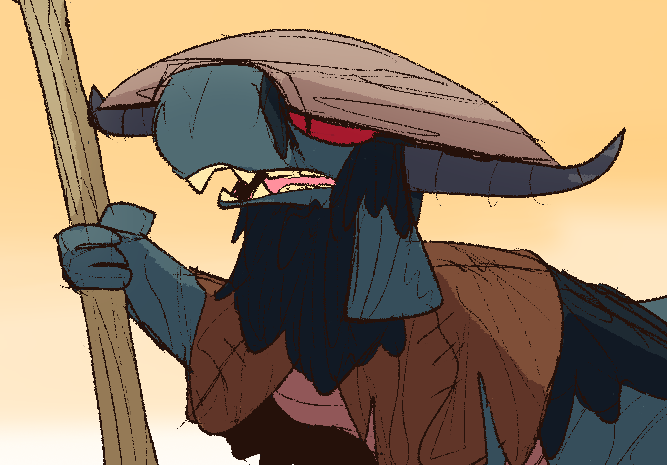
An orm in their mid 50s will likely look similar to an orm in their mid 80s, with age only becoming apparent as an orm reaches their midlife period. But overall the young adult period of an orm is about equal to that of the entire lifespan of many drekir. They are very long lived!

The Midlife Period
The Midlife period refers to the period roughly from 130-180 years of age, This is when an orms aging begins to become more apparent. The most notable trait is the blackening of scales and, if applicable, the silvering of fur or feathers. While signs of medical decline may be apparent as early as an orms later 120s, they will become notably more pronounced as the orm ages through the 50 years of midlife years. While many begin their midlife years relatively healthy, by the end of an orms midlife they are significantly worse off than a drek reaching the end of their own midlife.
The Elder Period
The Elder period refers to the twilight years of an orm between 180 years of age till the death of an orm. This is a period of extreme physical decline and, often, mental decline. This period is marked by the presence of pitch blackened scales, the falling out of feathers and fur, and an increasingly frail form.
The average lifespan of an orm tends to reach upwards of 195 years, but some long lived ormer have reached to be as old as 250 years.
The Ormer Breeds (wip will get back to this)
Ormer Social Behavior!
Ormer, while closely related to (and to be compared with drekir), have a fair bit of differences in regards to how they organize differently from drekir. Even moreso considering their smaller population when compared to drekir that shifts a lot of aspects of how their societies form and, often, mix in with drekir communities. Expect a lot of contrasting with drekir dens in this as while ormer have dens, their dens are quite a bit different!
Ormer Romantic, Polycule Dens
Ormer, as a species, are a K selective, polyamorous species that was built to make and carefully raise children over a long period of time to specialize in tasks, and that reflects in how their dens and perspectives of love, family, and romance differ from the drekir.
Unlike the drekir, who do not bond with mates and are heavily promiscuous, ormer are highly romantic and polyamorous. Usually throughout an orms adolescence they will form a clique with ormer of other dens that, over that decade, will usually turn into a romantically bonded polycule of ormer. An orm den, being more of an exclusive polycule, will remain sexually and romantically exclusive to their den. Whereas drekir don’t innately have a concept of infidelity, ormer very much do.
Moreover with parenthood, whereas drekir tend to breed first and parent later, Ormer have strong parental drives to raise their offspring and thoroughly prepare them for the world around them and, whereas drekir offspring do not bond at all with their parents, its normal for Ormer offspring to bond with their parents and form a familial bond. Similar to humans! But unlike humans, and similar to drekir, raising offspring is a collective effort with the entirety of the ormer den raising all of their children collectively and all their children seeing the adults as their parents.
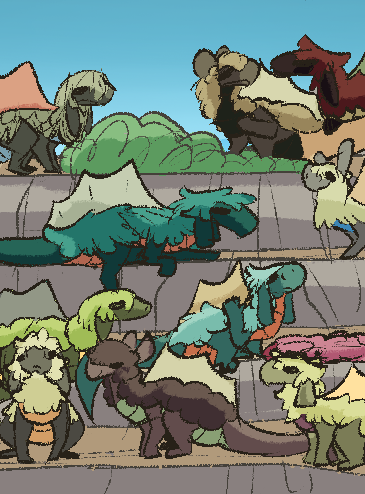
Ormer dens, being far more exclusive and parent focused than drek dens, also stand out due to their size. These giants tend to have drastically smaller dens than their tiny cousins with the average orm den only ranging between 9-15 individual ormer. But unlike drekir dens, which are often a lot more independent and only loosely tied to the other drek dens of their clan or tribe, ormer dens are often far more tightly interconnected.
Ormer dens often live in larger settlements together both for social reasons, such as having friends and acquaintances outside of the den to work and socialize with.
They also live together for genetically pragmatic motivations to avoid inbreeding due to too small of a genetic pool. Having all of the ormer that live in a region consolidated in one area allows for an easier time helping adolescents find their own partners within a larger population and maintain a large enough gene pool for a sustainable community.
Ormer Social Organization, Agriculture and Sedentism.
Ormer social organization often forms a pattern based off of the realities of their species population and biology. Ormer are large and, while omnivores, need to eat a lot of calories to stay alive. Moreover in order to maintain a healthy population, ormer also need to consolidate together. While not universal, these factors tend to result in a phenomena or Ormer sedentism with an emphasis of agriculture that would not be feasible amongst their smaller, more numerous, and far more carnivorous drekir cousins.
Ormer often live in densely populated communities, with these populated communities often comprising the majority population of ormer in often, a larger region due to the ormer needing to consolidate for social and reproductive health reasons. Most ormer settlements tend to house between 200-400 ormer, though there are of course larger and smaller settlements than those.
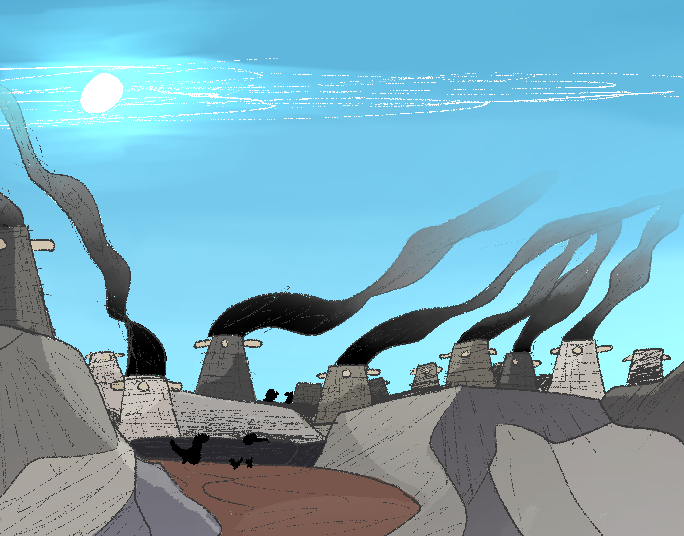
This population of ormer is usually organized by distinct orm dens and their offspring, living and working together within the community and related by cultural and historical ties, who often cement their ties by marrying their offspring ormer together. These sedentary, urbanized communities are often therefore tribal in social organization, usually lacking a distinct aristocracy and rather maintaining cultural ties within the orm community, as well as outwards towards the drekir dens around them, through informal institutions of reciprocity and social unity keeping them together and giving them the space to organize, discuss and determine the best actions for their community.
Moreover, these ormer settlements very often rely on intensive agriculture to feed their people year after year, due to the intense caloric needs of the dense population of ormer. Thus calorie intensive crops such as starchy roots, beans, squash, or other similar crops make up the bulk of an orms diet with grown fruits and vegetables, as well as fished hunted and traded meats making up a smaller bulk of their diet. While ormer in some cases do domesticate animals, its more typical to exchange meat from the local drekir around them. Speaking of!
Tribal Unity Between Drekir and Ormer.
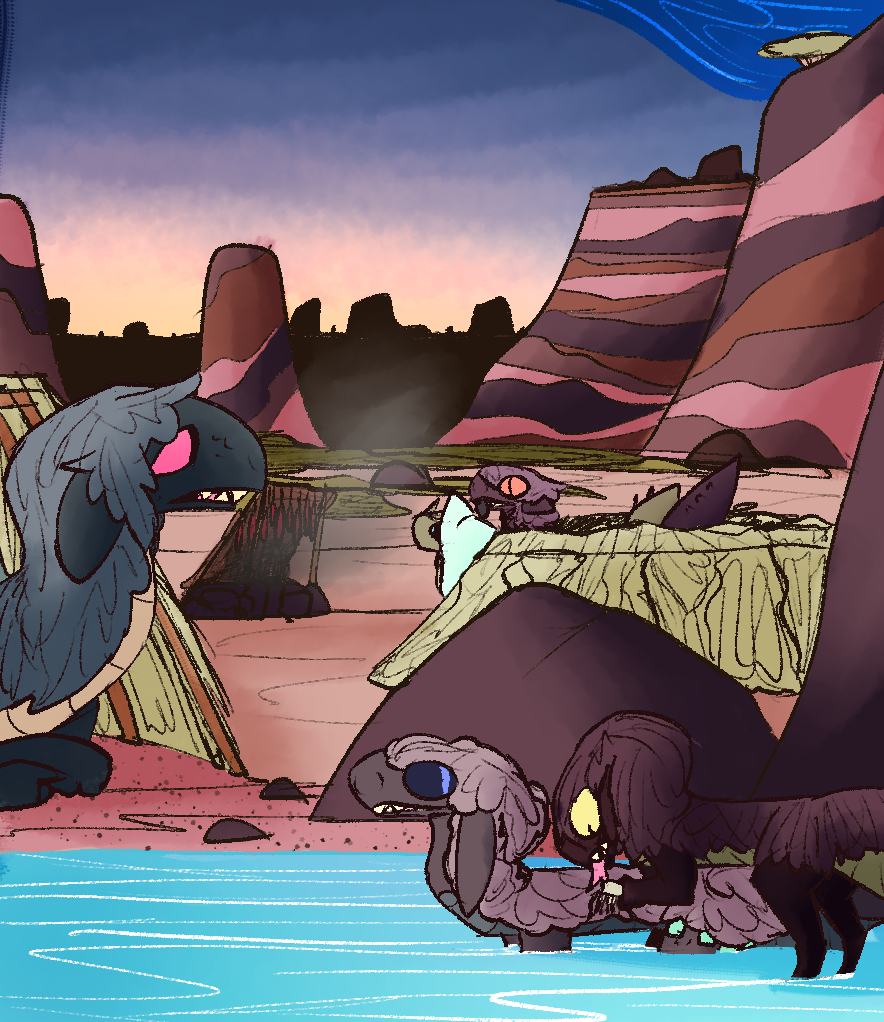
Ormer and drekir very usually work together within the same tribal networks and cultural groups as, even though they often live drastically different lives. they very effectively complement eachother and effectively support eachother. So while Ormer are often unique populations, they are usually considered parts of broader cultures that are generally populated by drekir, usually picking up similar cultural, religious, symbolic, aesthetic, and linguistic traditions as their little cousins. with the differences often coming from the more fundamentally distinct needs that Ormer have when compared with drekir.
In most cases, Ormer settlements are often surrounded by a far larger population of different drekir dens and clans, spread out over a significantly larger space. Both parties in most cases simply see the other as another member of the larger tribe, with ormer settlements being typically seen as sedentary clans by the drekir, and the ormer often seeing the drekir as simply less densely consolidated clans. Therefore its normal to see ormer and drekir participate as equals in tribal institutions and expectations, with ormer participating as equals in tribal councils or other such institutions to help determine political matters of trade, land usage, and social participation.
Ormer and drek dens also often compliment eachother economically. Drekir dens, being more spread out and often notably more mobile than the more agricultural ormer, usually have easier access to a wider variety of natural, mineral, and animal resources than the ormer. Additionally drekir being mesocarnivores means they often hunt, raise, “farm” or otherwise obtain a wide variety of meats in a large amounts that ormer don’t often have access to. Likewise ormer, usually being more agricultrally focused, have a larger amount of access to cultivated fruits, vegetables, herbs, and other crops that drekir would strongly want and need to balance out the nutrients missing from their meat heavy diets, but can’t necessarily justify farming themselves due to still needing a majority of meat in their diet.
And so it should be no surprise that drekir and ormer support eachother economically! Drekir often trade animal products such as meat, hides, bones, and fat as well as far flung natural minerals such as salt, knappable stones, or special woods and metals. Ormer in turn often trade valuable vegetables and fruits, and many make products that would be difficult for drekir to make that are nonetheless desired, such as services in making large log canoes, masoned stone bricks, and other sorts of crafts that are otherwise difficult for drekir. The two naturally support eachother heavily and compliment eachother.
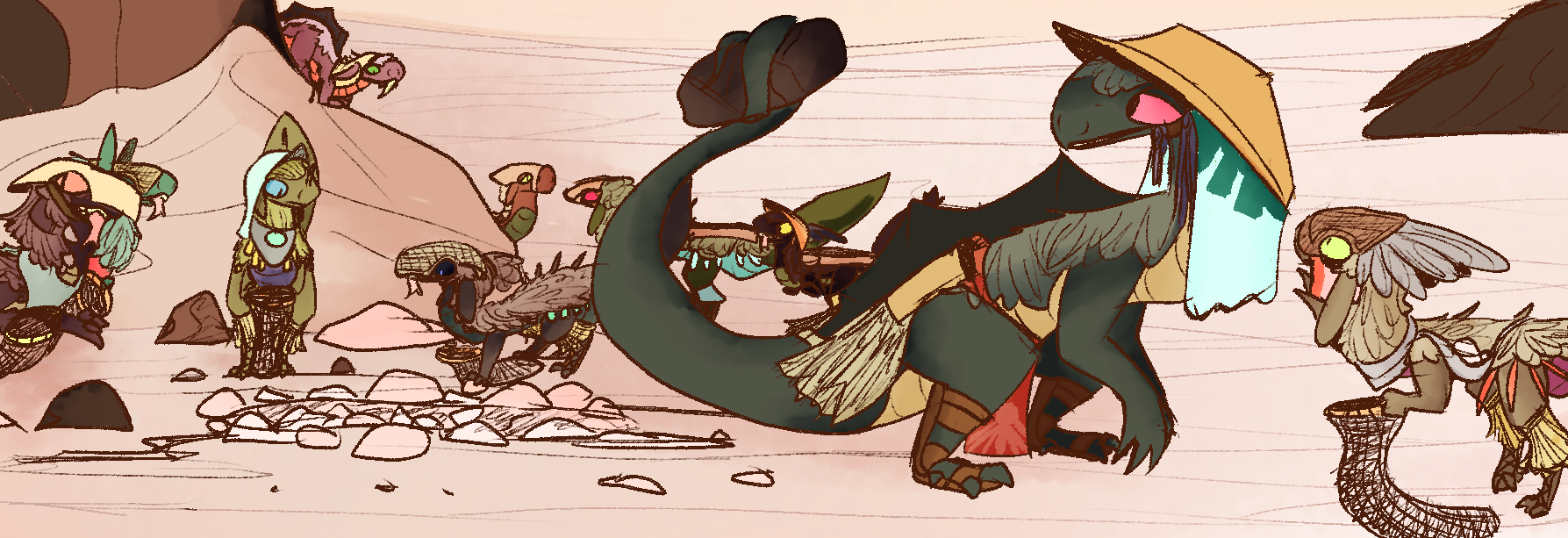
This cooperation also often extends to ormer and drekir working together for tasks that benefit eachother and compliment their strengths. Wherever tribes with ormer can be found it is likewise typical to see ormer sending out members of their communities to work with drekir for mutual benefit where they can. Be it quarrying operations to extract salt, stones, metal, or other resources from the earth or joining warpacks to combat dangerous threats to the tribe, ormer and drekir often work together both as equals and within their advantages and disadvantages day in and day out.

One thought on “The Ormer”